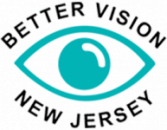National LED Day: What You Need to Know About Blue Light and Eyestrain

3 Bad Habits for Eye Health and Vision
09/09/2020
National Diabetic Eye Disease Month
11/12/2020Did you know that October 7 is National LED Day? In light of the holiday, we’re debunking LED, blue light, and eyestrain myths.
What is blue light?
Blue light is often associated with phones, laptops, LED lights, and other forms of electronics, but the prime source of it is the sun. The sun emits far more blue light than any LED bulb.
A popular myth is that blue light from LED bulbs or electronics causes vision loss and damage. Despite popular beliefs, there isn’t any evidence that supports this claim. So, why is this belief perpetuated? Improper use of digital devices can lead to eyestrain. Symptoms like blurry vision, dry eyes, irritation, and headaches are uncomfortable. They can be misattributed to LED or blue light as vision or eye “damage” when they are really temporary issues related to eyestrain.
When people look at screens, they blink approximately half as often as normal. Not blinking enough exacerbates dry eye and leads to uncomfortable soreness, while poor posture causes head, neck, and shoulder pain. The way people use a digital device—rather than the device itself—is the reason for any digital eyestrain symptoms.
Recently, popular blue light glasses have been popping up online and in stores as a way to protect your eyes. While there is no evidence that blue light damages eyes in any way, blue light can disrupt your sleep. The body tends to react to blue light the same way it does with sunlight. Exposure to this bright light during the nighttime confuses the body by making it believe that it is daytime. The brain stops producing melatonin and makes it difficult to fall asleep. Therefore, blue light can tamper with the body’s circadian rhythm.
Preventing eyestrain and sleeping well
Fortunately, you can limit blue light’s effects on the natural sleep-wake cycle as well as decrease your chance of suffering from eyestrain. Set your devices to “night mode,” a setting that decreases brightness and blue light. And, always try to avoid electronic usage before bed.
While using electronic devices for entertainment, working from home, or virtual school, take frequent breaks. Every 20 minutes, you should change your focus to an item at least 20 feet away for 20 seconds. You can set an alarm as a reminder to take a break from the screen. In addition, cut back on glare and turn down your brightness. If you begin to feel the symptoms of eyestrain, take a break. With everyone spending more time on devices, it’s important to limit screen time. Listen to your body and give your eyes, neck, shoulders, and back time to recover.
This LED day, celebrate all things LED—without unnecessary fear of blue light. Have more questions about blue light, LED, or digital eyestrain? Call our team today!




